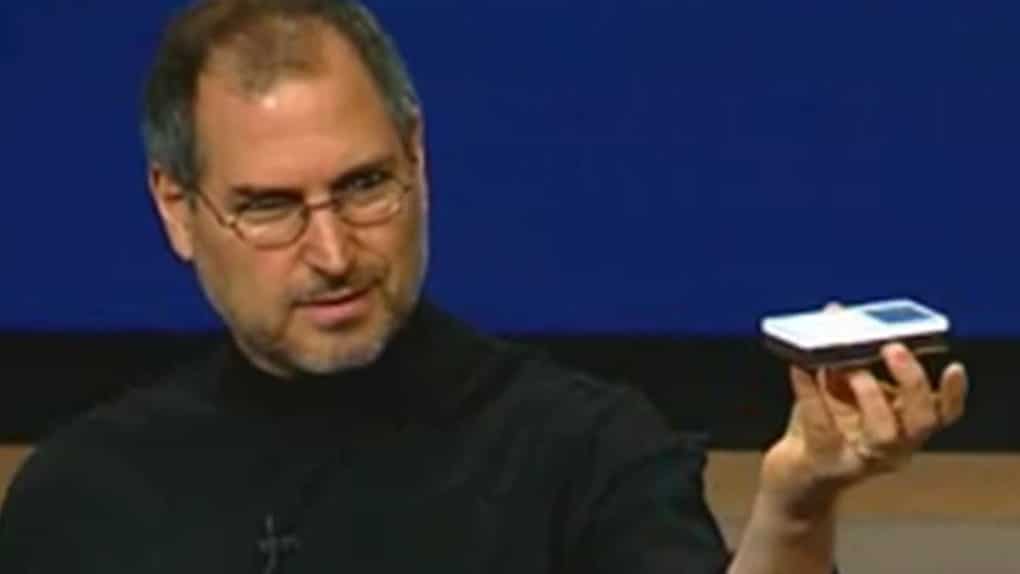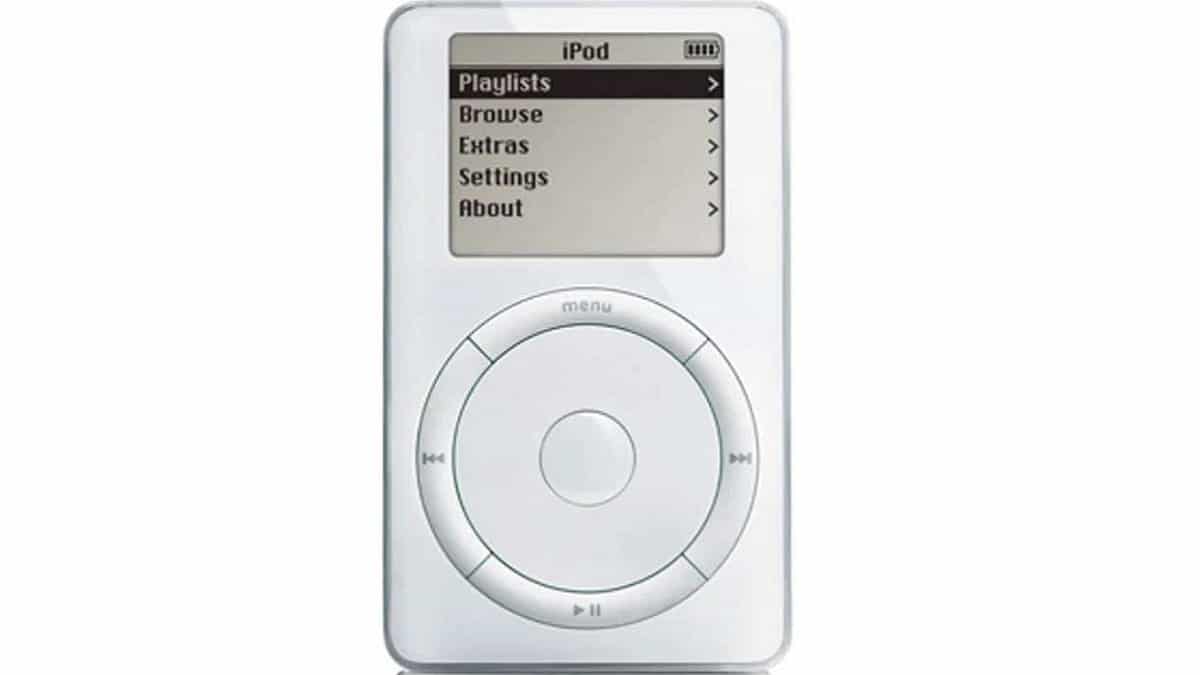After over 20 years, Apple has decided to say goodbye to iPod, a device that has changed the history of the company forever. And also that of the musica. Absolute protagonist of the transition to digital tracks, precursor of the success of the iPhone. A device that marked the technological history of the beginning of this millennium.
The story of the iPod, a device that changed Apple and music
“1000 songs in your pocket“. The writer was still a child when this slogan changed the paradigm of listening to music forever. The October 23, 2001 Apple introduced the first generation of the iPod, a ‘brick’ device with one black and white LCD screenor, you have a hard drive of 5GB.
Although the concept of MP3 player had already been around for a few years, the 1.8-inch memory of the Apple device was smaller and allowed to reduce the size of the device. But the the difference was made by the whole navigation system. In addition to the side keys to forward the track, Play / Pause at the bottom and Menu at the top, there was the mythical iPod ‘wheel’. Which allowed you to scroll through the entire catalog quickly. If other MP3 players had the ability to collect GB of music, Apple first it made tracks and playlists easy to use.
 Steve Jobs introduces the first iPod
Steve Jobs introduces the first iPod
Revolutionary
After working on a prototype the size of a MacBook for years, Apple had found the perfect recipe for its music player. A product that would change Apple’s business in more ways than one. First of all because it introduced the mobile device concept: computers were getting into your pocket. The definitive consecration of this concept will arrive in 2007 with iPhone, but iPod was the forerunner. So much so that Apple seems to have been working on an iPod touchscreen for years before the iPhone was launched.
And then a new revenue system for Apple begins in this period: not just hardware, but also services. iTunes it will be necessary for years to interface with the iPod and will become the center of music purchases. This focus on services will become fundamental with theadvent of the App Storand, again with the iPhone, but here it has its origin.
But the advent of iTunes will be crucial too for the fate of music. If in 2001 everyone still had a CD collector and they went to the store to buy the latest releases from their favorite artists, everything becomes more and more digital. Something that has not only changed the way of enjoying music, but also of producing it. The concept of album and single begin to changeto then continue the revolution within a few years with the birth of YouTube e Spotify.
iPod was a revolution, for Apple and for music.
The history of the iPod, new generations and new formats

Apple realizes it has something special in its hands and is ready to invest. Already at the beginning of 2002 it launches a version larger (10GB) than iPod, to then launch a new version on July 17, 2022. With two innovations that make its popularity explode: the bezel gives tactile feedback thanks to the work of Synaptics and, above all, comes the Windows compatibility. Everyone downloads iTunesone of the few Apple software products to break into Microsoft systems.
For subsequent generations we see the thickness decrease, while autonomy and capacity increase. Hours and hours of music in our ears. In 2005, however, Steve Jobs pronounces his historical “one more thing ”to announce a novelty: the new iPod had one 2.5-inch screen on which to view videos. In terrible resolution and on a tiny screen, sure. But iPod could become the smallest TV in the world.
Nano, Shuffle, Touch
Meanwhile, new variants arrive to meet the needs of different users. Like theiPod miniintroduced in 2004. But success comes with l’iPod nano, launched a few weeks before iPod (which will take the name of iPod Classic). The nano version has 1, 2 or 4GB (the following year comes the 8GB version, which we still have in a drawer). A model less expensive but with the same ease of use. A device that will have seven successive generations, until 2012.
Also in 2005, in January, he arrives iPod Shuffle. An even cheaper and very small product, in 512MB and 1GB formats. No screen, but the same keys seen in the older brothers. An incredibly cheap product (some models cost less than a couple of AirTags today) and easy to use. But above all perfect for sportsmen, who used the clip to run or train in the gym (we also have a couple of them by chance). This form factor has recently also been successful on TikTok, with Gen Z bewitched by the iPod Shuffle.

In 2007, however, it arrives iPhone and everything changes. IPod too. In fact, on September 5 of that same year, Apple launched iPod touch, based on the same concept as the iPhone. A only center button and touchscreen display, available in 8, 16 and 32 GB. It becomes the longest-running iPod, with the latest model introduced the January 12, 2020.
In recent years, Apple has sold over 450 million iPods. That’s nowhere near the 2.2 billion iPhones produced, but that’s a staggering number.
Goodbye, iPod: a piece of technological and musical history
iPod classic has seen six generations, mini has lived two, nano has seven, shuffle four, and touch seven. Together, they cover a arc that goes from 2001 for the first launch and to 2020 for the most recent one. Online you will still find videos of users who have found a way to use an external Bluetooth module for use your first iPod with AirPods. Our first iPod nano has a compromised battery, but it still has the playlist we listened to on our way to high school.
But today iPod is anachronistic, as it was fundamental for Apple and for music. IS victim of the same digital revolution that he himself started: today there are smartphones to listen to streaming music, MP3 players are no longer needed.
Users can continue to buy iPod touches while supplies last, but Apple will no longer produce any. The company however writes that “The spirit of the iPod will live on” . We thank him for all the good music he put in our ears and promise not to forget his impact on technological and musical history: goodbye, iPod.















Leave a Reply
View Comments